Citizens throughout our nation are slowly realizing that our choices, and those that we make for our children, have serious consequences. A wave of media attention surrounding the children’s health sector seems to have marked the natural products industry as the key to promoting health for younger generations. And as many parents catch on to these messages, more and more companies manufacturing healthy products for infants, children and teens have come into existence.
Nevertheless, the number of children suffering with obesity and cholesterol problems leading to the early onset of type-2 diabetes and other health risks, attention deficit hyperactivity disorder (ADHD), autism and countless other conditions is steadily increasing. Kalpa Solanki, mother and president of the Canadian-based BoBoBaby, says she created her company because she was tired of not having a healthy option for her children. Criticizing the food industry, she comments that while media and government institutions cry out about the crisis of obesity and diabetes in children, “The most common kids menu choice is still chicken nuggets.”
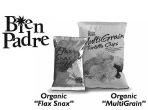 Jonny Bowden, Ph.D., C.N.S., consultant to Barlean’s Organic Oils, based in Ferndale, WA, adds that the number one dietary culprit for many of these ailments is not fat; “It is huge amounts of sugar, soda, French fries, sweets, processed foods, low-quality cereals, fried foods, trans-fats and about twice the number of calories needed coupled with a vanishingly low level of exercise and activity.”
Jonny Bowden, Ph.D., C.N.S., consultant to Barlean’s Organic Oils, based in Ferndale, WA, adds that the number one dietary culprit for many of these ailments is not fat; “It is huge amounts of sugar, soda, French fries, sweets, processed foods, low-quality cereals, fried foods, trans-fats and about twice the number of calories needed coupled with a vanishingly low level of exercise and activity.”
Creating even more difficulties for America’s children is the mentality that pharmaceuticals can cure what poor diets and inactivity create. On July 7 of this year, the American Academy of Pediatrics (AAP) Committee on Nutrition issued alarming new guidelines on screening and prescription for children’s cholesterol control. AAP’s statement recommends that children just over two years old with a family history of heart disease or high cholesterol be screened and approve s statin use, cholesterol-lowering drugs that have been known to have various side effects, for children as young as eight (see sidebar).
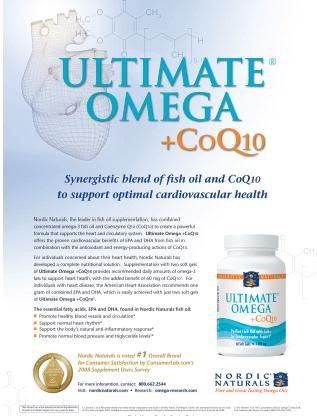 Future generations have not given in yet. In fact, America’s teenagers have embraced the healthy food movement with support of organic and vegetarian diets. Whether these decisions are being made for health or for environmental concerns, the future looks bright. Says Keane Tsu of Au’Some Snacks, based in Monmouth Junction, NJ, “The parents of the generation in high school/college right now have been paving the road for getting America out of its obesity issue.”
Future generations have not given in yet. In fact, America’s teenagers have embraced the healthy food movement with support of organic and vegetarian diets. Whether these decisions are being made for health or for environmental concerns, the future looks bright. Says Keane Tsu of Au’Some Snacks, based in Monmouth Junction, NJ, “The parents of the generation in high school/college right now have been paving the road for getting America out of its obesity issue.”
As far as supplementation goes, notes Douglas MacKay, N.D., research advisor to Watsonville, CA-based Nordic Naturals, “Teens are a tough sell of swallowing vitamins, except young men trying to bulk up with whey and carnitine, etc.” However, he does see growth in beverage and bar products in the functional foods category.
More and more parents are also spending extra time in the grocery store analyzing the labels of every product they intend to feed to their children. So yes, the American public knows there is a problem. However, many fail to understand the gravity of the situation at hand. John O’Connor, B.S., nutrition, dietetics and food science with Los Angeles, CA-based Jarrow Formulas Industries’ quality control and research and development departments, says that recognizing the special needs that exist at each stage of life and adjusting diet and supplementation accordingly is an essential component to the health of children as well as adults.
Infants
The first six months. The logical first place to look when addressing a child’s future health is at birth. “In the case of infants,” says O’Connor, “breastfeeding during the first four to six months is the ideal way to start off life.” Breast milk, he says, is the ideal food to maintain an infant’s nutrition and promote a strong immune system.
Maday Labrador, M.S., director of technical resources at Enzymedica, based in Port Charlotte, FL, explains that a mother’s milk is uniquely formulated and is “the only food that newborn babies can fully digest because it is full of vital enzymes.” With a proper diet, she suggests, a mother’s breast milk can support a baby exclusively for up to six months or more and can help the infant’s digestive tract and immunological system, potentially reducing allergy risk later in life.
Mothers that are breastfeeding must be conscious of their own diets, says O’Connor, which will “invariably affect the nutritional composition of the milk.” He suggests that breastfeeding mothers have a varied diet that is nutrient dense. Healthful sources of essential omega-6 fatty acids (e.g., safflower and sunflower oils) and omega-3 fatty acids (e.g., cold water fish, flaxseed oil, walnuts) are “needed for fetal/infant eye and brain development, overall growth and immunity,” he says. Vitamin B-12, from food or in supplement form, he adds, is also crucial, especially for vegan mothers.
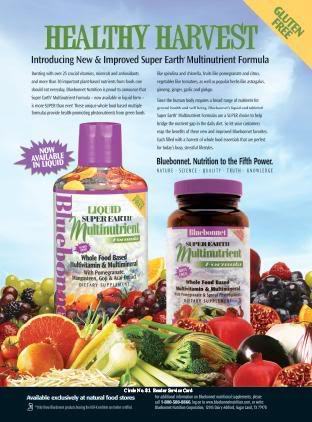 “Nevertheless,” O’Connor says, “even breastfeeding isn’t perfect as breast milk is typically low in iron and vitamins D and K. Therefore, good food sources of these nutrients should be introduced as early as possible.” He notes that animal sources tend to offer more bioavailable heme iron, but vitamin C can improve absorption of non-heme iron found in non-animal sources. Retailers may also want to make liquid multiples designed for infants available to their customers. However, it is important that your clientele check with a pediatrician before beginning any such supplementation.
“Nevertheless,” O’Connor says, “even breastfeeding isn’t perfect as breast milk is typically low in iron and vitamins D and K. Therefore, good food sources of these nutrients should be introduced as early as possible.” He notes that animal sources tend to offer more bioavailable heme iron, but vitamin C can improve absorption of non-heme iron found in non-animal sources. Retailers may also want to make liquid multiples designed for infants available to their customers. However, it is important that your clientele check with a pediatrician before beginning any such supplementation.
Richard Passwater, vice president of research and development at Leonia, NJ-based Solgar Vitamin and Herb, adds, “Probiotics are one of the few supplements that are specifically recommended for infants and children. They are especially important for infants who were born via Caesarian section,” he says, “since their mothers were not able to transmit beneficial microflora to their babies as they traveled through the birth canal.” Products such as Solgar’s ABC Dophilus Powder, which include the Bifidobacteria strains B. bifidum and B. infantis and other strains such as S. thermophilus, are specifically formulated for infants and children.
Jarrow Formulas also offers infant and children probiotic formulations. Baby’s Jarro-Dophilus is intended for infants and toddlers and comes in a powder form as well as a flavored, chewable probiotic for toddlers and children called Yum Yum Dophilus. As children reach adolescence and are comfortable with swallowing capsules, however, a standard formulation will do, says O’Connor.
 The outcome of an infant’s health, however, starts even before birth. “Many nutritionists I know believe, as do I, that the biggest gift to the overall health of America would be to put every single pregnant woman on fish oil,” says Bowden. “The baby’s brain,” he explains, “is 60% fat by weight, most of it omega-3s like DHA.” Moreover, he says, “Every major behavioral and cognitive problem that’s been studied has ‘coincidentally’ revealed painfully low levels of omega-3s.” Bowden acknowledges that this research does not mean that omega-3s will “cure” these things, but, he says, “it’s more than a coincidence that omega-3s are so low in the diet of those with every one of these problems ranging from ADHD to aggression to cognition and attention problems.”
The outcome of an infant’s health, however, starts even before birth. “Many nutritionists I know believe, as do I, that the biggest gift to the overall health of America would be to put every single pregnant woman on fish oil,” says Bowden. “The baby’s brain,” he explains, “is 60% fat by weight, most of it omega-3s like DHA.” Moreover, he says, “Every major behavioral and cognitive problem that’s been studied has ‘coincidentally’ revealed painfully low levels of omega-3s.” Bowden acknowledges that this research does not mean that omega-3s will “cure” these things, but, he says, “it’s more than a coincidence that omega-3s are so low in the diet of those with every one of these problems ranging from ADHD to aggression to cognition and attention problems.”
Creating a foundation. As a baby begins to eat solid food, Solanki of BoBoBaby says a parent has an opportunity to lay down a good foundation. “By age two,” she says, “a child’s palate is developed in terms of what they will eat and what they won’t eat.” Introducing a variety of fruits, vegetables and other whole foods at a young age, therefore, may dictate to which types of food a child grows accustomed. “I don’t think baby food has to be boring and tasteless, as many of them are,” says Solanki.
Solanki also suggests introducing simple one-ingredient foods to babies and increasing the complexity and texture of the foods given as the baby grows. The BoBoBaby line, for instance, has formulations for six, seven and nine months, each formulation becoming more complex. “One of the criticisms of traditional baby food is that the food is completely pureed and by nine and 10 months a baby has teeth.” This, she says, can limit a baby’s ability to chew solid food even after one year.
Organic baby food has also been seen as an upcoming trend as parents become more concerned about overall health. “People who don’t even buy organic for themselves,” says Solanki, “are making the effort to buy organic for their children.” While the long-term impact of pesticide use on traditional foods is not clearly known, parents are wary of exposing their children to such foods at an early age. Solanki also explains that pesticides tend to bioaccumulate in body fat, and babies normally have a high percentage of body fat.
Statin Drugs and ChildrenThe American Academy of Pediatrics (AAP) Committee on Nutrition recently a clinical report calling for the lipid screening of children over age two with a family history of high cholesterol or heart disease. Even more troubling, the report suggests "pharmacological intervention" for high-risk patients over eight years old. This intervention would involve cholesterol drugs, otherwise known as statins. The recommendation has produced a large amount of public backlash as statin drugs have been known to have side effects. James Gormley, writing for the Dietary Supplement Information Bureau, highlights expert findings that say muscle pain and other side effects occur in up to 30% of statin patients. "Possible side effects, which for some people can even be disabling, can include: Lou Gehrig's disease, liver and kidney problems, muscle aching or weakness, numbness in the hands and feet, memory loss, dark or cola-colored urine, among other serious problems," says Gormley. Even more pressing, he adds, is that the guidelines do not offer time restraints, meaning children prescribed statins at a young age could potentially have to take these drugs for the rest of their lives(1). In the AAP's defense, Peter Belamarich, pediatrician at Children's Hospital at Montefiore Medical Center in New York City, told Newsweek, "The kids who would qualify for drug treatment based on these guidelines are less than 1% of all children. Ninety-nine percent of children and adolescents still should be treated with what's called therapeutic lifestyle change: limiting animal fat, increasing physical activity to an hour a day." However, Belamarich, who has prescribed statins to children in the past, said his own guidelines are higher than that of the AAPs, and he did not tend to prescribe medication to children until after the age of 10. Also of note, "There are data suggesting that statins can interfere with growth and development in utero, so we should not prescribe them to anybody who might get pregnant unintentionally, and that would include adolescents," said Belamarich(2). The New York Times editorial board also highlights that there is no evidence proving that statins will prevent heart attacks later in life. Moreover, short-term studies indicate that statins are safe and effective in children and adolescents, but the Times notes, "there is no data on the potential side effects of taking the drugs for decades." The board also warned that the recommendation could "open the way for drug companies to bombard anxious parents with ads promoting these and other products and increase the number of parents insisting on prescriptions for their children"(3). Being that this decision may influence a vast amount of consumers, it is important to keep your clientele educated about the potential side effects of statin use in children, and offer sensible alternatives such as a healthy diet and less TV. References |
Early and Middle Childhood
As children age, keeping them eating healthy foods becomes more difficult. As every parent knows, kids are picky eaters. Keeping your store packed with options for struggling parents may be the relief they need, and the reason they come back to your store. Labrador of Enzymedica says parents should instill good eating habits in their children between ages two to 12. “This,” she says, “is the best time to become creative with veggies and fruits. Raw foods contain enzymes and are a great nutritious snack that bodies can utilize.”
On the contrary, diets high in cooked and processed foods, explains Labrador, can result in poor digestion because these types of foods are void of enzymes. Many children, as well as adults, are also lactose intolerant, creating difficulties in dairy digestion. Supplemental enzymes assist the digestion progress, as well as the assimilation of important nutrients. Enzymedica offers Kids Digest, a powder that can be mixed in juice, which covers all major food groups. As a child gets old enough to swallow capsules, however, Labrador suggests that Digest or Digest Gold be added to the child’s diet before meals.
Additionally, says Jolie Root, nurse, nutritionist and health educator at Carlson Laboratories, Inc., located in Arlington Heights, IL, “Children need to eat meals made from whole foods and enjoy fresh healthy proteins such as organic poultry, fish and free range beef, vegetables and fruits and whole grain foods. Dairy products, if included, should be organic to reduce levels of hormones and pesticides.”
More specifically, diet and lifestyle should be based on the MyPyramid paradigm (formerly the Food Guide Pyramid) developed by the Center for Nutrition Policy and Promotion, an organization of the U.S. Department of Agriculture, says O’Connor of Jarrow. The reason being that “One size doesn’t fit all.” Variables such as gender, height, weight, activity level and age all factor in to one’s health.
Tsu of Au’Some agrees and believes we should “educate our young that, as in life, diet is also about balance. Not all carbs are bad, not all sugars will make you fat.” Moreover, “One must understand his/her own metabolism. If the child isn’t as physically active, then he/she should consume less.”
O’Connor explains, however, that some foods should be favored over others. MyPyramid’s approach, he says, includes both plant and animal sources into its model, but it puts emphasis on a higher intake of plant foods. “A diet too high in animal foods,” he explains, “is invariably low in fiber, as well as all of the wonderful polyphenolic compounds that can only come from plant sources such as grapes, blueberries and pomegranate.” Further, he says, “fruits and vegetables are bulky foods, high in both water and fibers (both soluble and insoluble), the consumption of which promotes satiety, proper elimination, good digestion and cardiovascular health.”
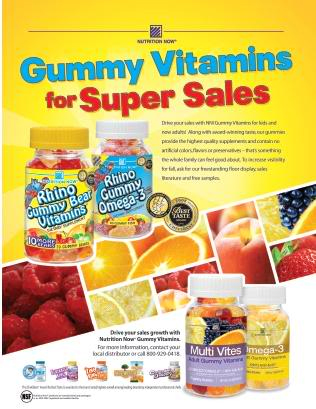 Children, however, do not seem to be getting enough fiber, says Solanki. She notes that the number one reason children visit a pediatrician is due to constipation, which is often caused by an insufficient intake of dietary fiber. Other things missing in the average child’s diet include the fat-soluble vitamins A and E, folate, calcium, iron, magnesium and zinc, notes O’Connor. “Therefore,” he says, “after three years of age, a good chewable multi can help guard against any possible deficiencies.”
Children, however, do not seem to be getting enough fiber, says Solanki. She notes that the number one reason children visit a pediatrician is due to constipation, which is often caused by an insufficient intake of dietary fiber. Other things missing in the average child’s diet include the fat-soluble vitamins A and E, folate, calcium, iron, magnesium and zinc, notes O’Connor. “Therefore,” he says, “after three years of age, a good chewable multi can help guard against any possible deficiencies.”
When it comes to multivitamins, there are many formulations that have been made with the picky child in mind. Solgar’s Kangavites multivitamin, for instance, comes in Bouncin Berry and Tropical Punch multivitamin and mineral tablets (ages 2 and up), as well as an Orange Burst vitamin C 100 mg tablet (ages 4 and up). Nordic Berries from Nordic Naturals offers a multivitamin in a flavored chewable. Jarrow Formulas’ Kids Multi comes in multi-flavored bear-shaped chewables for ages two to 12. Other unique and tasty options are being introduced everyday and retailers should compare ingredients and test some out before deciding which lines to pick up. It’s important to remember that a multivitamin will not help anyone if a child has to spit it out. In other words, taste is king!
Nutrition, however, comes first and multis should include many, if not all, of the aforementioned nutrients. Iron, in particular, says Solgar’s Passwater, is “important for the growth and intellectual performance of children of all ages.” Specifically, he says, “Iron acts with protein and copper to make hemoglobin, the oxygen-carrying component of red-blood cells.” Because of this, “iron deficiency in children is a major concern—especially for teenage girls who are menstruating,” he adds.
Root of Carlson also recommends 250 mg of each EPA and DHA daily for children under 12 and 500 mg for those over 12. “That amount has been successful in multiple studies for reducing hyperactivity and improving learning,” she says. Many companies now produce kid-friendly fish oil supplement options such as Carlson for Kids Fish Oil, Solgar’s lit’l Squirts Chewable DHA Chewie-Gels and Barlean’s Kid’s DHA (fruit punch-flavored liquid) and Omega Burst candy-like Omega-3 supplements.
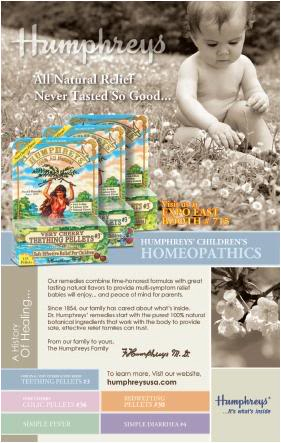 To the list of important nutrients, Root adds vitamin K and especially vitamin D, which she says should be taken from infancy (200 IU to 400 IU daily). After age two, she says, children should increase their intake to 1,000 IU daily. Root explains, “Vitamin D will support healthy bone development, reduces incidence of type-1 diabetes and also protects the heart.” In contrast, “Low rates of vitamin D have been associated with higher infection rates and incidence of several cancers,” she says.
To the list of important nutrients, Root adds vitamin K and especially vitamin D, which she says should be taken from infancy (200 IU to 400 IU daily). After age two, she says, children should increase their intake to 1,000 IU daily. Root explains, “Vitamin D will support healthy bone development, reduces incidence of type-1 diabetes and also protects the heart.” In contrast, “Low rates of vitamin D have been associated with higher infection rates and incidence of several cancers,” she says.
Research into the novel ingredient Pycnogenol, a plant extract from the bark of the French maritime pine tree, has also been shown to balance stress hormones in children, which lowers adrenaline and dopamine, resulting in a decrease in the symptoms associated with ADHD. The study consisted of 57 outpatients with ADHD with an average age of 9.5 years, 41 of which received Pycnogenol and 16 who received a placebo on a daily basis for one month. Researchers found that Pycnogenol lowered stress hormones by 26.2% in the case of adrenaline and decreased neurostimulant dopamine by 10.8%. The study also showed ADHD recurrence after a one-month discontinuation of Pycnogenol treatment (1).
Tough Love. Diet, supplementation and an emphasis on physical activity all factor into a child’s future health, and parents can play a great role in making that happen. Bowden of Barlean’s says that retailers need to instruct their parenting clientele in the ways of tough love. “Their kids MAY complain. Sorry, but they complain about a lot of things. Our job as parents is not necessarily to give them what they want but what they need. If kids were the best judges of what’s good for them, they wouldn’t necessarily need us.”
A survey published this year by Nurturing Results, a research and consulting firm, entitled “Healthy Habits for Preschoolers” found 93% of moms understand that early nutritional habits influence their child’s lifelong eating habits, and 74% believe they are pretty good or excellent at creating a healthy lifestyle for their children. However, almost 60% of mothers surveyed said they pack a juice box/pouch in their child’s lunchbox that contains four to five teaspoons of sugar (2). The problem, therefore, is not the parents’ intentions, but rather, the lack of good information.
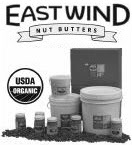 “The largest challenges to providing proper nutrition for kids is a lack of convenient and healthy offerings and a lack of time or energy to prepare healthy meals,” reports Nurturing Results. Healthy and convenient offerings for children are now crowding the natural products industry from low-sugar and preservative-free juice boxes to organic fruit snacks and almond and peanut butters.
“The largest challenges to providing proper nutrition for kids is a lack of convenient and healthy offerings and a lack of time or energy to prepare healthy meals,” reports Nurturing Results. Healthy and convenient offerings for children are now crowding the natural products industry from low-sugar and preservative-free juice boxes to organic fruit snacks and almond and peanut butters.
The job of the retailer is to carry “lunch box” items that can make their customers’ lives a little easier. Tough love doesn’t have to be that tough if parents have access to traditional “peanut butter and jelly” options that include organic ingredients, added omega-3s and natural and healthy sources of protein and fiber. “Who says healthy can’t taste good?” asks Tsu, whose company produces Florida’s Natural fruit snacks and Pocket Fruit Organic fruit snacks.
Solanki of BoBoBaby agrees, and explains that her company’s BoBoKids line sneaks vegetables in all of its products, which range from pancake mixes, nut-free trail mix, pasta sauces and its newly introduced Mookies (a cross between a cookie and a muffin). “No one complains about their child getting too many vegetables,” she jokes.
Adolescents
As children grow into their teens, maintaining health is just as, if not more, important. The trouble now is that the rebellious teenage years can create obstacles for parents trying to guide their children’s health. That is another reason it’s so important that parents take charge earlier in life to set the foundation previously mentioned.
Smooth as a Baby's BottomA new market for natural skincare Organic and natural skincare is seeing market growth in all populations and retailers must not look past their younger clientele. For one, manufacturers with product formulations designed specifically for infants have certainly become more prominent. Monica Pound, executive marketing manager at Santa Ana-based Nature's Paradise, says the natural and organic beauty market has seen a shift in recent years with media attention. Previously, she explains, the core clientele of this has been individuals who researched products meticulously, but now, she says, "even those who don't know why chemicals are bad are turning to organic products." In particular, she says, the teen market is expanding. "We receive countless calls from teenagers who ask deep questions about chemicals and the effets they can have on them." She even notes that the company has been interviewed for high school reports on organics. The point is that the "cat is out of the bag" when it comes to natural skin care. Being aware of skin conditions affecting your younger customers and carrying products that address these issues may increase sales. Eczema, for one, is a common condition that can affect all age groups from infant to adult. It dries out the skin and leaves itch red marks. When dealing with eczema, Pound suggests products that use 100% organic shea butter because it deeply moisturizes and repairs dry skin. In addition, she says, "With its high levels of vitamin E, it helps in restoring the healthy appearance of normal skin, minimizing any scarring." Other natural ingredients like natural beeswax, extra virgin olive oil, and herbs like chamomile and calendula are being used in baby formulations to prevent and sooth diaper rash and cradle cap as well in baby massages, say information provided by Badger Balm of Gilsum, NH. More and more mothers, even those who use traditional products on themseleves, look to those types of prodcuts for their babies. Teenagers concerned with acne have also turned to the natural products store for answers. Considering that acne may leave scars if the skin is too dry, shea butter can also be affective in moisturizing the skin. Pound adds that Argan oil, which is rich in antioxidants and has antifungal, antibacterial and anti-inflammatory properties, can help cleanse the pores and kill bacteria. Other unique cleansers utilize ingredients such as tea tree oil, willow bark, lavender and chamomile to treat acne, according to information provided by derma-e, based in Simi Valley, CA. |
“Adolescence brings an increased demand for nutrients,” says Labrador, and it’s essential that sugary drinks and high-fat foods be replaced with water and high-fiber foods. “Often times, due to a busy schedule, teenagers look to fast foods and/or junk food,” she says. In order to avoid this, retailers should tell their clientele to keep nourishing snack foods such as raw fruits and vegetables, yogurt and nuts available at all times, suggests Labrador.
Supplementation during the teen years is also important because requirements for most micronutrients increase during this phase of development. O’Connor says particular emphasis should be placed on the “nutrients needed for the growth of lean muscle mass, bone and red blood cells—especially during the growth spurt (an 18–24 month period during puberty)—including calcium, iron and zinc.”
Another nutrient important for lean muscle growth is folate, which is found in green leafy vegetables, citrus fruits and fortified in whole grains. Folate is particularly important for menstruating girls due to “the importance the nutrient plays in preventing neural defects during the first trimester of pregnancy,” says O’Connor.
Females in this age group may also be deficient in vitamins A, C and E, which can suppress antioxidant status and growth. Iron deficiency is also common after menarche and can lead to anemia, O’Connor says.
“Additionally, the mean intake of the minerals calcium and magnesium, needed for bone and heart health, are also found to be low in this subgroup,” he says. Considering that females have a higher risk of osteoporosis, supplementation during these critical years is of the utmost importance. Although males tend not to suffer as many nutritional deficiencies as females in this age group, O’Connor recommends supplementation with vitamins A and C and calcium.
 Retailers should be proactive not only in educating parents about these issues, but also by going directly to the teen. As stated earlier, many teens have caught on to the organic food and functional beverage trend, but supplements can be a harder sell. Nevertheless, says Labrador, “Teenagers are learning the importance of good nutrition and supplementation in promoting nice looking skin, building strength and endurance and feeling good; issues that are important to them.” The health and beauty market is a good example of this (see sidebar).
Retailers should be proactive not only in educating parents about these issues, but also by going directly to the teen. As stated earlier, many teens have caught on to the organic food and functional beverage trend, but supplements can be a harder sell. Nevertheless, says Labrador, “Teenagers are learning the importance of good nutrition and supplementation in promoting nice looking skin, building strength and endurance and feeling good; issues that are important to them.” The health and beauty market is a good example of this (see sidebar).
Andreas Koch, marketing director at Barlean’s, says, “North American teens’ diets and nutrition could, no doubt, significantly improve, but there’s no real noticeable positive trends in this direction.” By explaining nutrition issues to your teen customers in ways they can understand, future positive trends may be created including supplementation. Many natural products companies have made this task even easier, says Koch, by offering tasty supplements that appeal to that sweet-toothed teen such as the company’s Omega Swirl, which comes in an all-natural, lemon-flavored Cod liver oil formulation and an all-natural strawberry/banana flax oil formulation. As more products like these are introduced to the teen market, it may become the next emerging sector in the natural products industry and these customers will most likely bring their respect for nutrition into adulthood. WF
References
- J. Trebatická, et al., “Treatment of ADHD with French Maritime Pine Bark Extract, Pycnogenol,” Eur. Child Adolesc. Psychiatr. 15 (6) 329-335 (2006).
- Nurturing Results, “Healthy Habits for Preschoolers Study,” Nurturing Results, Available at www.nurturingresults.com, January 2008.
WholeFoods Magazine, September 2008










